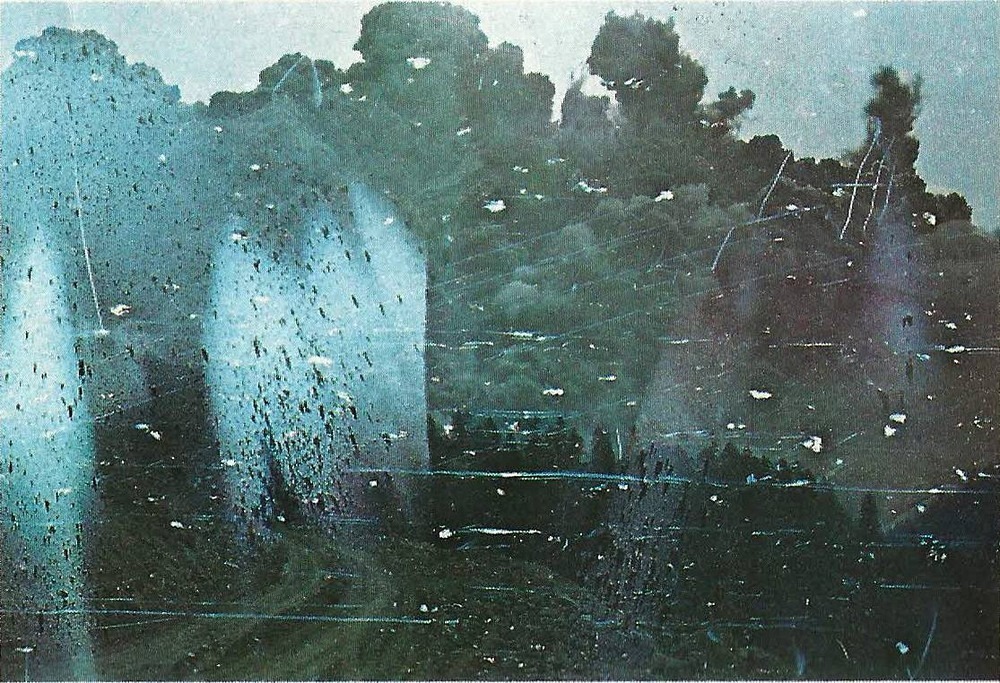When Mount St. Helens erupted in the morning of May 18, 1980, a freelance photographer named Robert Landsberg was within four miles of the summit documenting the event. Robert had been visiting the grumbling mountain since April, and had made dozens of successful trips hiking and climbing to various vantage points to capture the changing volcano that had been erupting for the past several weeks.
On Saturday evening, May 17, Robert camped near the volcano and wrote in his journal, “Feel right on the verge of something.” Aside from his gut feeling, there was nothing on scientific instruments that volcanologists had placed in the vicinity of the volcano to measure everything from the rate of bulge movement, to sulfur dioxide emission, and ground temperature, to indicate the catastrophe that was about to follow.

The following morning, Robert woke early and drove a bit farther up the road, stopping less than four miles west of the volcano’s summit. He had his camera on a tripod aimed towards the smoking mountain when a section of the mountain collapsed exposing the high-pressure magma chamber. Molten rocks and ash exploded through the side of the mountain and an avalanche of hot gases, ash and pumice raced down the mountain at a thousand kilometers per hour, obliterating trees and everything else for hundreds of square kilometers.
Eleven miles away photographers Keith Ronnholm and Gary Rosenquist had set up camps at Bear Meadows. Seconds after the earthquake that struck at 8:32 a.m, William Dilly, a member of the Rosenquist party, noticed through binoculars that the north flank was giving away and shouted that the "mountain was going." Rosenquist picked up his camera and fired a series of photographs in rapid succession.
These photographs taken within a span of about 40 seconds would later be stitched together to create a timelapse of the eruption that enabled scientists to reconstruct the sequence of events during the first minute of the cataclysmic eruption.

Timelapse created from photographs taken by Gary Rosenquist

Timelapse created from photographs taken by Gary Rosenquist
Rosenquist’s team survived because the blast was deflected by a ridge that stood about a mile away between them and the mountain. But Robert Landsberg was not so lucky. He was too close to the blast.
As the cloud of ash and hot rocks bore down upon him, Landsberg, realizing he had no means of escape, did as best as he could to photograph the eruption until the last possible moment. Landsberg then wound the film back into its case, placed the film and his camera into his backpack, and then laid himself on top of the backpack in an attempt to protect its contents. Landsburg's body was found buried in the ash with his backpack underneath seventeen days later.
The film was partially damaged by the heat and by light leaks, but otherwise intact. The photographs were published in the January 1981 issue of National Geographic.

Robert Landsberg’s last photos

Robert Landsberg’s last photos

Robert Landsberg’s last photos

Robert Landsberg’s last photos
 Two photographers died that day. The other was photojournalist Reid Blackburn who was working for a local newspaper as well as National Geographic magazine and the United States Geological Survey. Blackburn was assigned to stay on the mountain until May 17, the day before it erupted, but as fate would have it, he decided to spend a few more days. Blackburn was camped near Coldwater Creek, 8 miles away from the mountain’s north flank. This region was totally obliterated by landslide and pyroclastic flow.
Two photographers died that day. The other was photojournalist Reid Blackburn who was working for a local newspaper as well as National Geographic magazine and the United States Geological Survey. Blackburn was assigned to stay on the mountain until May 17, the day before it erupted, but as fate would have it, he decided to spend a few more days. Blackburn was camped near Coldwater Creek, 8 miles away from the mountain’s north flank. This region was totally obliterated by landslide and pyroclastic flow.
Blackburn’s body was discovered the following day, inside his car that was buried in ash up to the windows. Blackburn was still seated at the wheels and the car was facing away from the mountain as if he had been trying to flee before he was overcome by the superheated cloud of ash and burning pumice. Every window of the car except the windshield was blown out. The fabric lining the roof of the car had come undone and was hanging weighted down by ash.
Blackburn’s camera was too damaged to salvage any images he had shot, but decades later an undeveloped role of film he shot of the mountain before the eruption was recovered by a photo assistant for The Columbian, the newspaper where he worked.
Reid Blackburn’s lost photos discovered in 2013.
Blackburn's car buried in mud and ash.

Reid Blackburn's photo log book shows he had taken five shots that morning, four of them during the eruption. Photo credit: The Columbian
No comments:
Post a Comment